Words by Lisa Morris, photography by Jason Spafford.
Typically, what do you do when the weather isn’t playing nice? Weather is the defining quality of a landscape, and aside from the extra effort involved, the wilder it is, the more compelling your photograph. It determines the two most pivotal landscape features: lighting and mood. As we slip into a changing and sometimes inclement season, the weather will invariably prove more challenging; it’s tempting to pack your camera away. The purpose of this feature is to urge you not to give up before you’ve even started. Instead, uphold a positive mindset in capturing what the upcoming months have to give, despite the odds. Whether the skies are grey, it’s chugging down, or you are enshrouded in fog, rather than viewing it as battling bad weather, why not get out there and embrace the enthralling possibilities to your advantage?
Preparation: Better Late than Weather
- No such thing as bad weather: Wear insulating and waterproof layers, weather-sealed footwear, and pack a hot drink. A poncho, for instance, will protect you and your camera bag.
- Think Tank Emergency Rain Cover: The construction quality is excellent, although there are cheaper rain sleeves. A rucksack’s rain cover will keep your camera bag dry, as will dry bags for your lenses.
- Lens hood: Its framing around your front element offers excellent protection against the rain.
- Long lens: A long zoom lens, e.g., 100-400mm, facilitates images (from a sheltered spot) that will embody the landscape’s spirit. For aesthetic value, I relish the compression of perspective from such a lens.
- Sturdy tripod: A must-have when lighting levels are lower on drizzly days, which means exposures will be longer. NB: Shoot plenty of handheld shots as well.
- Filters: Pack various neutral density filters; they’re helpful to reduce the shutter speed when shooting the rain or wind. Better to get moisture on your filter, for example, than your lens.
- Multiple microfibre cloths: Moisture, condensation, and lousy weather come packaged; whether you’re in a misty wood or on a windy coastline, you’ll wish to wipe the droplets off the lens with a fresh cloth.
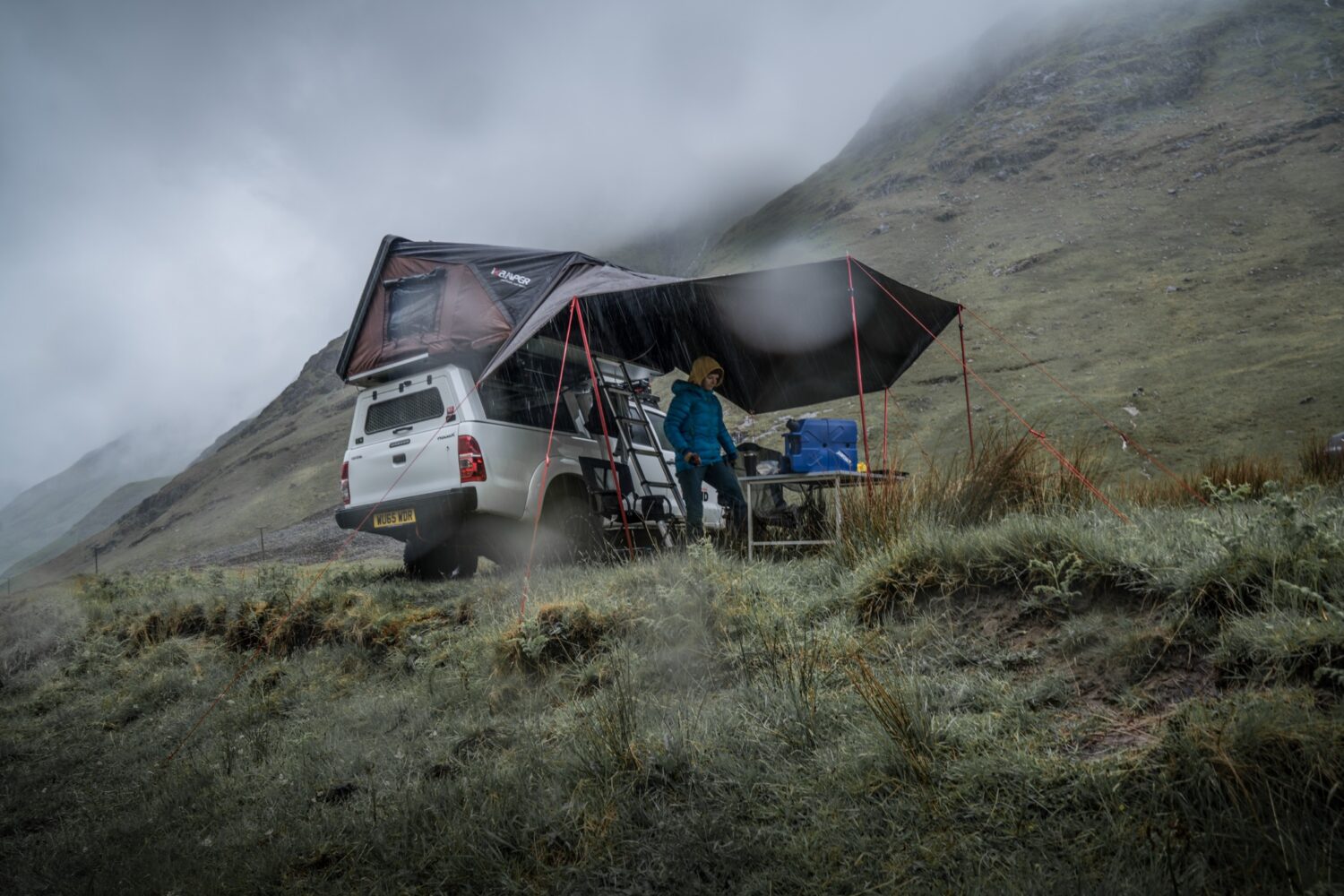
Bad Weather Tips: You’ve Weather Had It So Good
- Flash: Turn it off to keep your image natural; utilise the good light when there’s no harsh sun glare.
- Foreground interest: Aim to include some foreground element(s) within the frame compared to the overall tones from precipitation. Exposing to the right in the histogram will give a high-key feel over a grey, overcast one.
- Framing: Endeavour to take as much into the frame as you can; it can add scale and depth during inclement weather. For example, trees draw attention away from an uneventful, white sky lacking texture.
- Moody mono: Amplify the moodiness you can convey with the high and atmospheric contrast of shooting a scene in black and white. Enhance the elements by emphasising tones and textures.
- Colour: Rugged landscapes combined with dark skies give you that feeling of Mordor from Lord of the Rings in gloomy conditions. The impact is heightened when strong colours are featured.
- Post-processing: Don’t aim to make the image look like good weather photography in post. Instead, tweak the Highlights, Shadows, and Clarity sliders to make the detail pop and cool down the temperature setting.
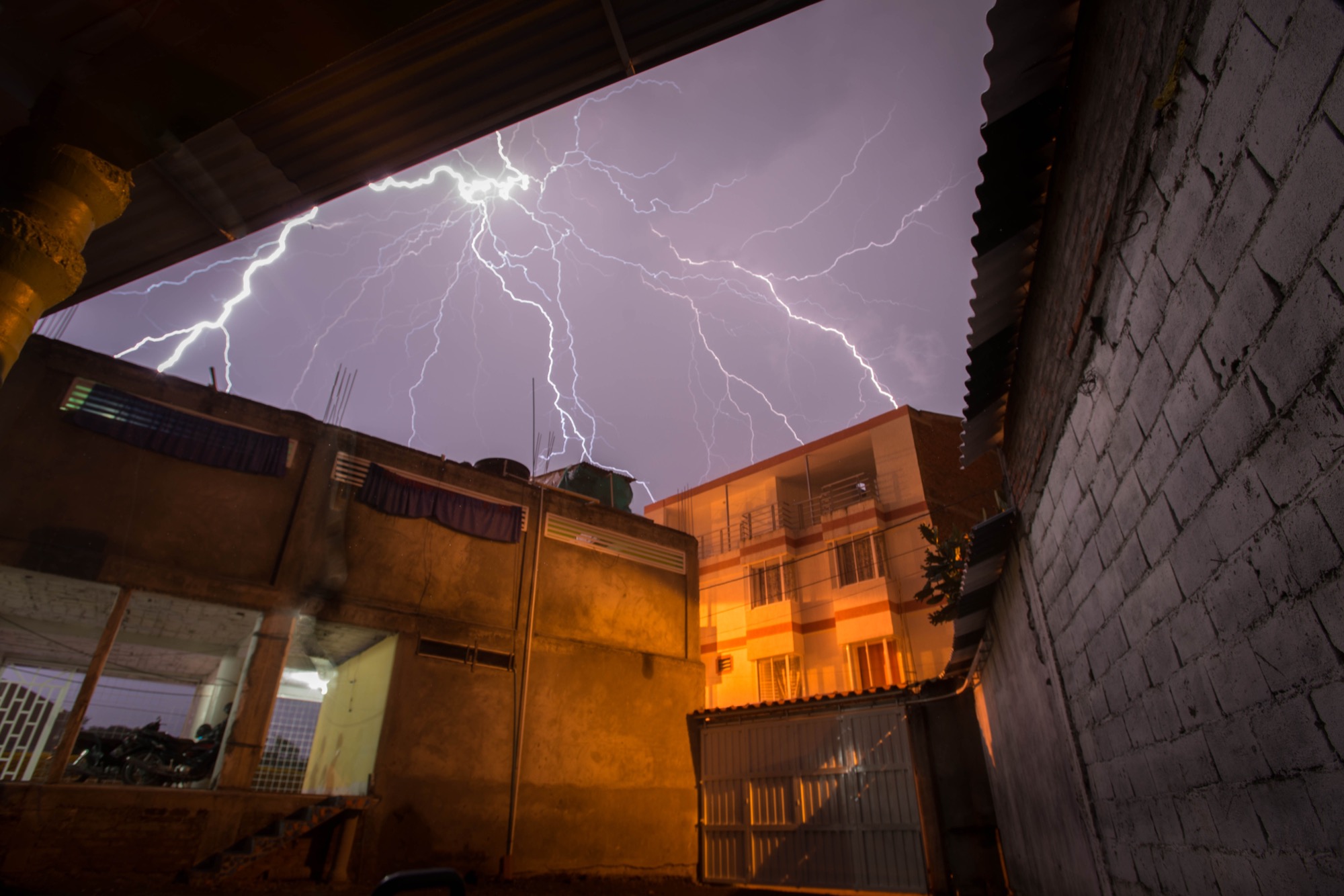
Grey Skies: Weather of Two Evils
When the sky looks overcast and featureless, it’s worth noting that if you can’t wait for the weather to change, switch your location. No day should go wasted. A grey sky can evoke a certain mood that works congruously with many landscapes. For instance, derelict sites can add further pathos when shot under a grey sky. The trick is to match the location with the weather on hand. Grey skies don’t have to be flat with featureless clouds; turn it into something dramatic. Technically, shooting under grey skies is relatively easy. With a reduction of contrast, it should be simple to achieve the right feel with a histogram in the 0-255 tonal range.
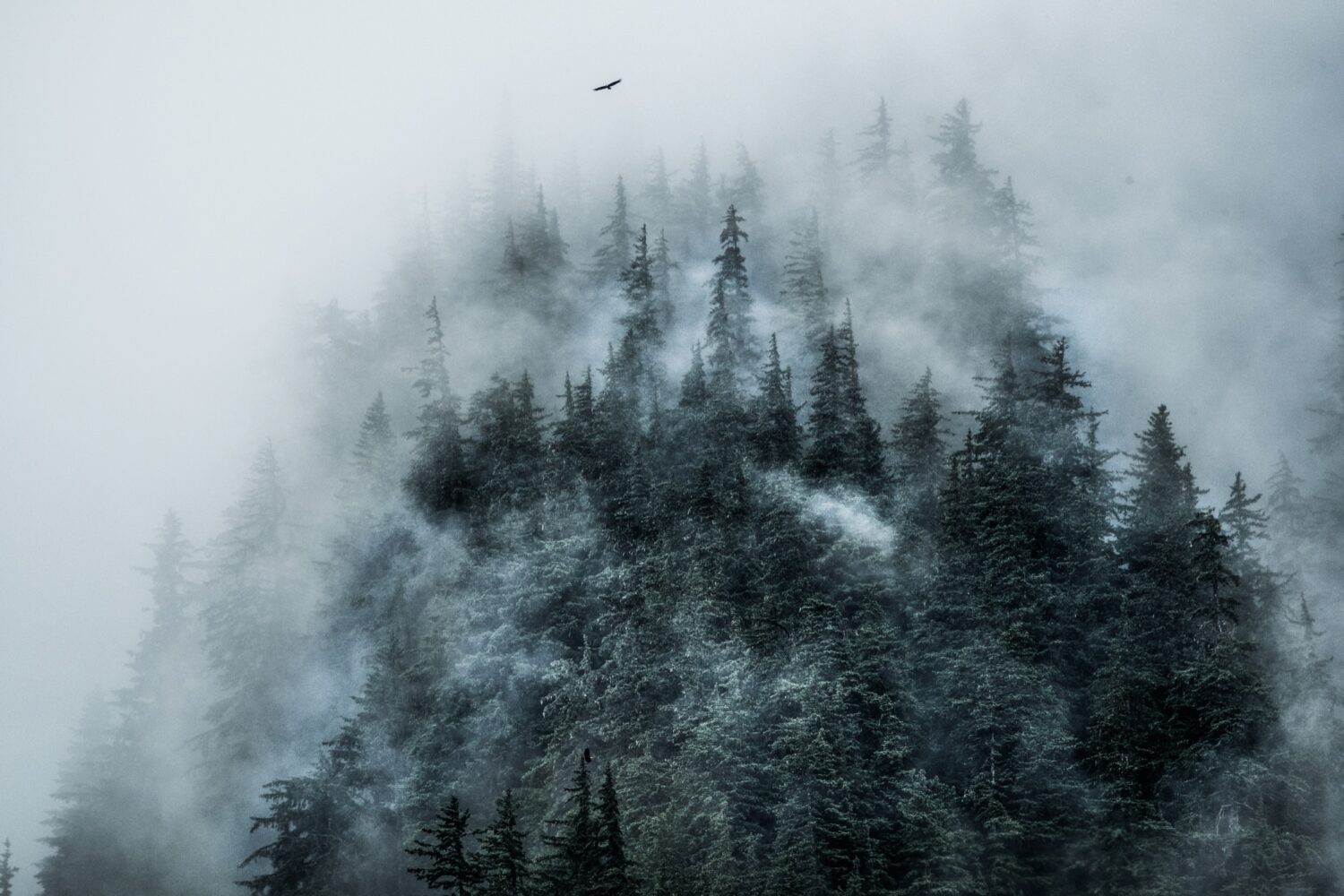
Cloud: Best Thing I Weather Had
Dark, shape-shifting clouds can be Wuthering Heights brooding—a great backdrop with intensity and texture for photographing practically any man-made landmark or natural feature. Consider shooting only the clouds; develop a bank of images to use as add-ins when compositing with other photographs. With a diverse cloud catalogue, those vanilla sky pictures will be a thing of the past. Low-hanging clouds can add an intriguing mystery to your photos. If you live near a high-rise building or the mountains, go high. Swirling clouds shot from above offer an interesting perspective, so try long exposures—an astonishing result may ensue.

Precipitation: It Never Rains, But It Pours
If you are less keen to shoot in the rain, don’t be. Some brilliant images can be captured when it’s persisting it down—it just takes a little commitment. Like grey skies, rain comes in many forms, from a gentle drizzle to a biblical monsoon. When experiencing a deluge, it’s vital to keep everything dry; judge the rain’s direction, so it’s not coming at you. If you’re already in your waterproofs, you’ll be more inclined to look for that money shot. Notice how colours become more intense and leap out of the image, particularly compared to the lacklustre hues on an overcast day. Namely, perceive rain in a different light. Rain photography gives you myriad creative and artistic options: rolling streaks on windows, ripples in rivers, or reflections in a puddle’s natural mirror. Urban areas work well whose tarmac surfaces reflect beautifully. Further, a wet day gives you macro photography opportunities: droplets and rivulets, ideal subjects in the flat, uniform light of a rainy day. Play around at ISO 4000, and experiment with shutter speeds, using faster ones for moving subjects in the frame.
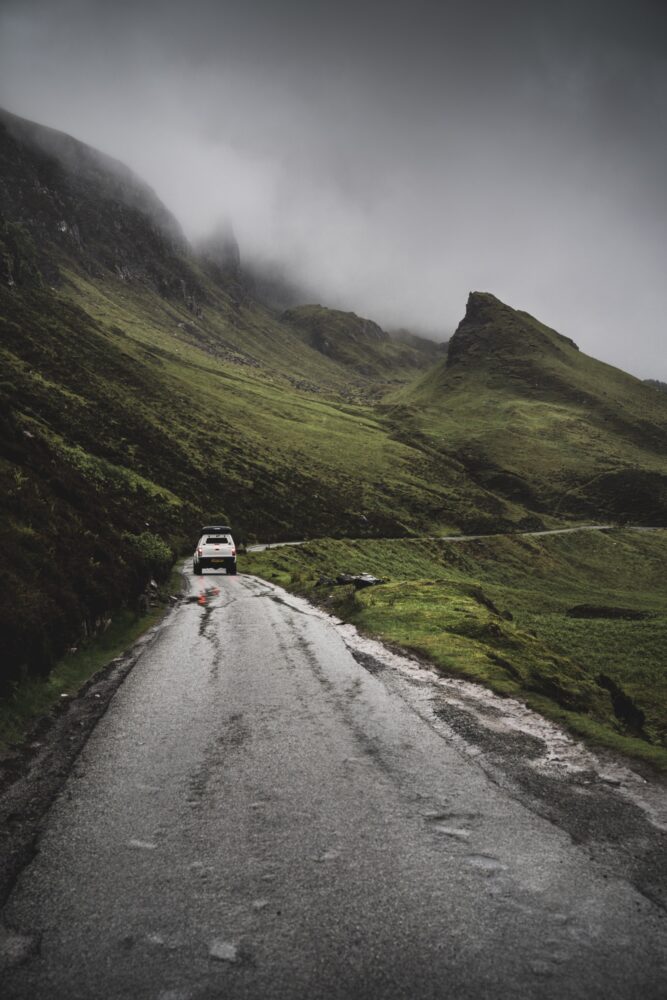
Mist and Fog: Weather Say Die
It’s fair to say that fog depletes colour saturation significantly, thereby highlighting the photograph’s tonal values. Thus, images taken in fog translate well in monotone. When you retain colour, shades will appear understated and subtle. Before the fog burns off, you can engage in a visual phenomenon called tonal recession. Namely, objects farther away appear more pastel and faded than those near the camera; this tonal interplay is evident when shooting trees and can transform an image. Due to low visibility, the result tends to be simpler. Nothing is holding you back when it comes to fog’s fine art possibilities to create atmospheric scenic shots—wonderful for storytelling and can be utilised as a backdrop to conceal cluttered backgrounds.

Wind: It’s Wind of a Funny Story
Shooting in the wind comes with its challenges. When you aren’t sufficiently sheltered, the buffeting against your tripod will likely cause camera shake. That said, wind invites drama to the landscape and presents the chance to convert the everyday into something extraordinary. You have a variety of shutter speeds with which to experiment, so make that your priority. Breezy to gusting conditions offer all you need to illustrate wind in long exposures: trees swaying heavily, long grass dancing, leaves being blown. Cloud movement, however, requires a slower speed. Use an ND filter to slow your shutter, so it encapsulates the motion produced by the breeze. The juxtaposition of movement and static is a powerful creative technique.
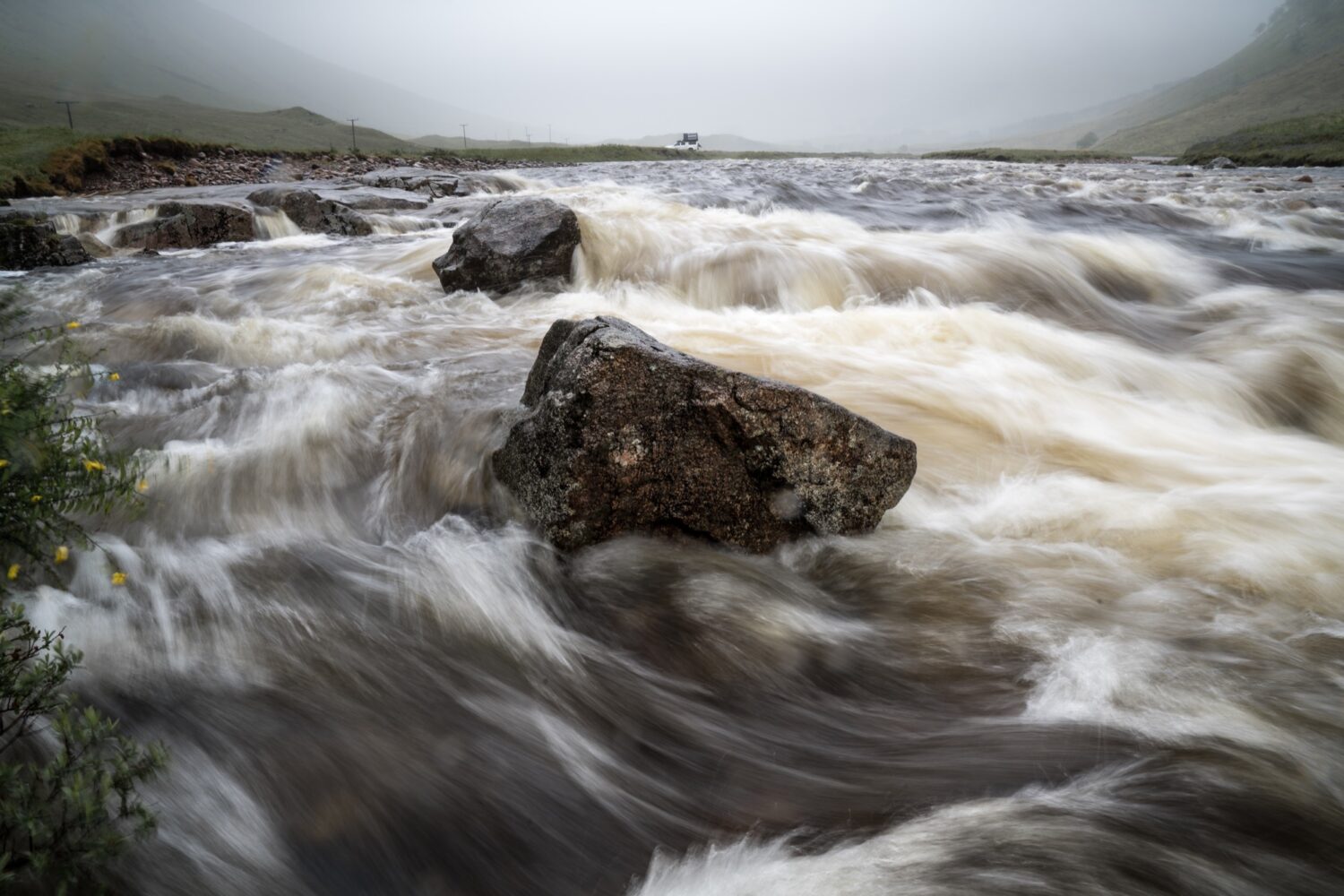
Conclusion: If We Weather Meet Again
There’s no other way of mashing it; you have to be motivated to shoot in disagreeable weather, but don’t be surprised when the interesting shots emerge. If you endure the rain, chances are you’ll be recompensed for your patience and effort. Grab your gear, venture out, and brave the elements to capture some rare and uncommon moments that most people never attempt. Luck favours the prepared and those willing to persevere—you may also get lucky. As frustrating as bad weather can be, you may end up with something far more special than anything you could have taken had the weather been good.

When you’ve travelled to reach a remote destination, and weather conditions aren’t what you were expecting for the time of year, you can’t pack up and return home. You have to make the best of what you’ve got, so look for the cloudy day’s silver lining. On some grey days, that’s why bad weather can expedite mesmerising photography. Weather conditions can change on the spot, better complement the landscape with the soft light illuminating the scene beautifully, and open up a window to produce something unexpected and exquisite. You don’t always need to wait for the magic-hour light. Just try not to become demotivated when it doesn’t happen because it will make the moment all the more sweet when it does. Give me drama in the skies any day over bluebird skies when the sunlight is flat and harsh—there’s always something to shoot.


